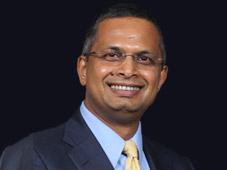Interviews
In-depth analysis of Industries and companies and how they manage complex and
demanding business environment.

It must be considered that there is nothing more difficult to carry out, nor more doubtful of success, nor more dangerous to handle, than to initiate a new order of things.
- Niccolo Machiavelli, The Prince (1532)
This column has featured CEOs, CIOs, CTOs but never a Chief Transformation Officer, so naturally we were very excited. Much intrigued, our first question to him was about his unique designation and whether it involved a combination of many roles such as those of Chief Executives, CIOs and Strategists. He agreed.
He explained that earlier in his career at Bank of America - a more than couple of century-old behemoth, he had led transformational change which was massive in its scope and complexity. In those four years, he had donned many hats - that of a coach, leader, trainer front-ending at times and also playing the supporting role when situation demanded. In his own words: “there was absolutely no role left that I did not do.”
This inevitably proved that there’s no one size fits all formula to achieve transformation. The evolving reality needs the right thinking and guidance. This is what made him chose the role of a Transformation Officer at Altimetrik, where he enables several leading enterprises across industries with their transformation journeys.

